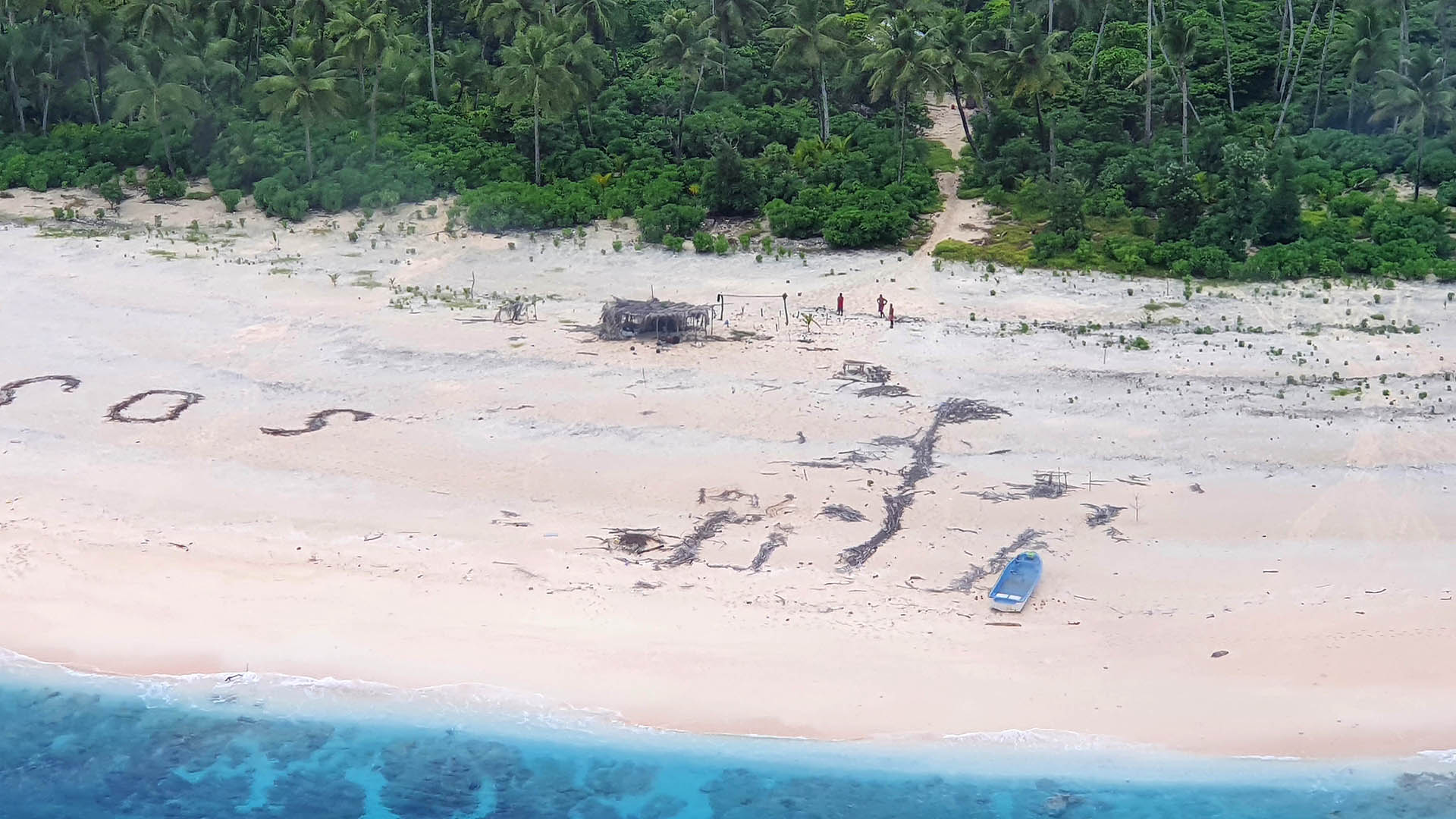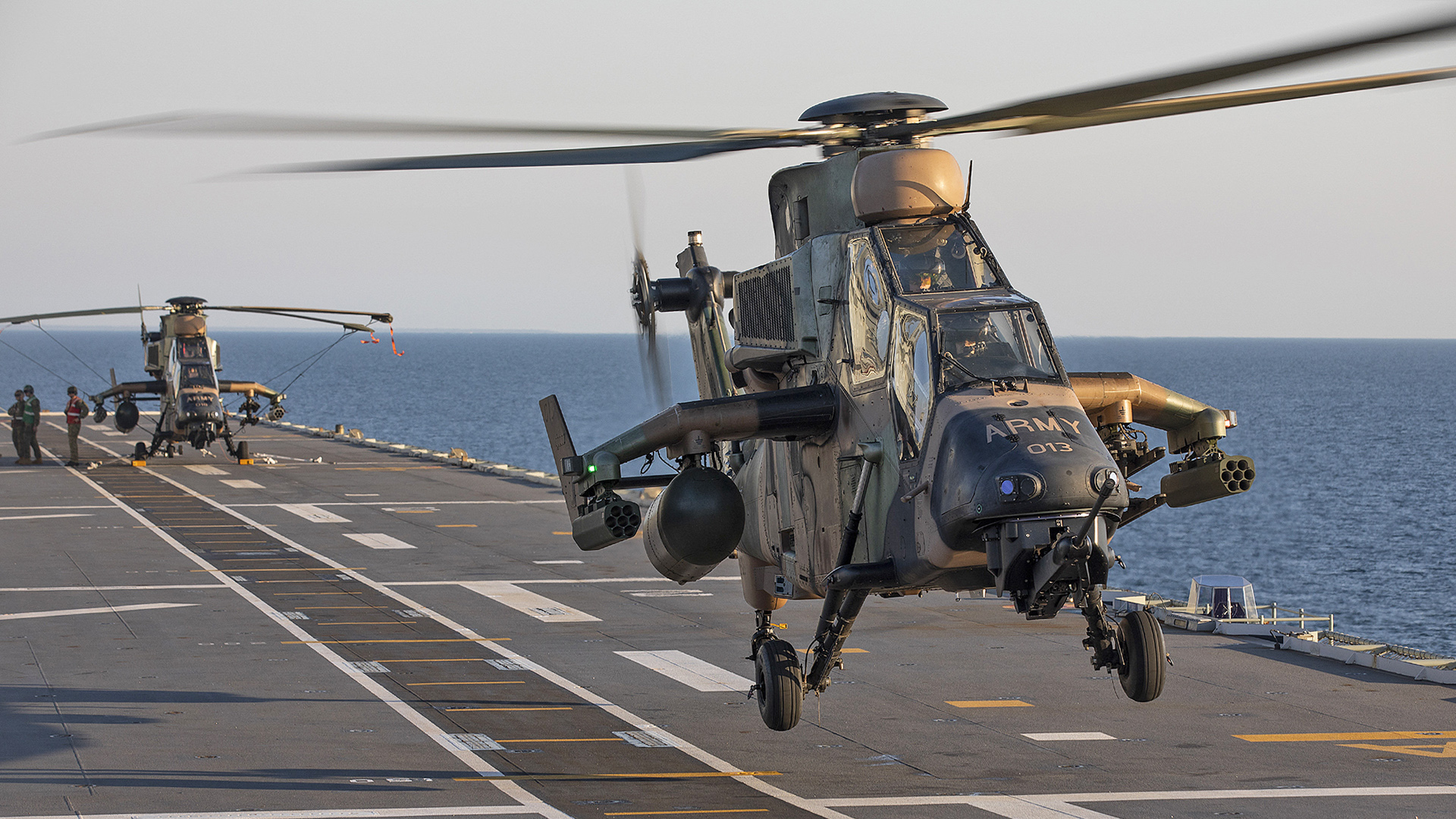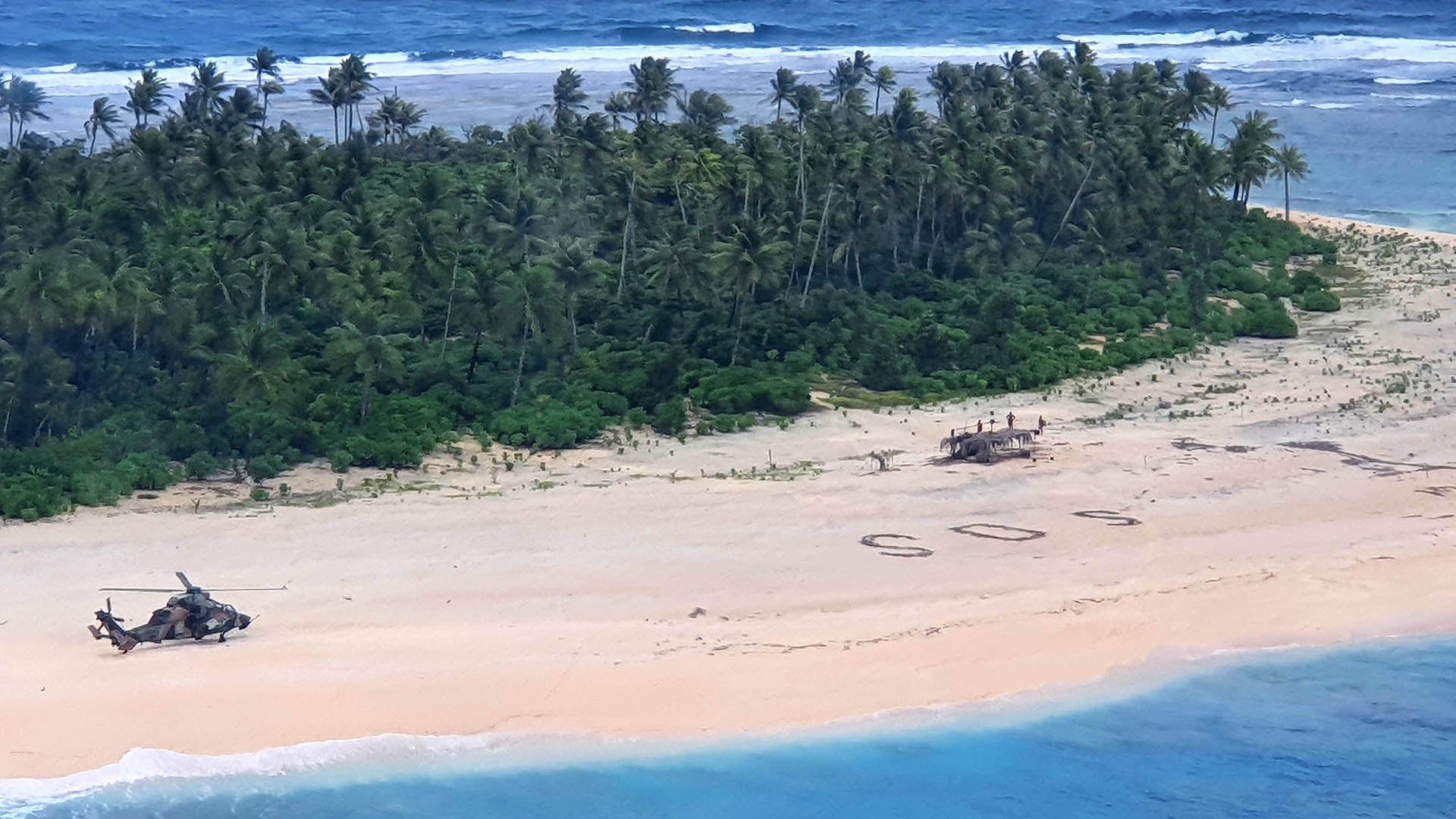The Airbus Helicopters ARH Tiger might not have gotten much love from the Australian Army of late, but the attack helicopter was a very welcome sight at the weekend for a group of sailors marooned on a tiny Micronesian island for nearly three days. In a scene worthy of Hollywood, an SOS message spelled out on the beach was sighted by both Australian and U.S. aircrews, before a helicopter flying from an Australian warship came to the rescue.
Four ARH Tigers and a single Airbus Helicopters MRH90 Taipan transport helicopter were on board the Royal Australian Navy’s (RAN) amphibious assault ship HMAS Canberra and they swung into action to help find the three sailors.
After setting off in their 23-foot skiff on July 30, 2020, the sailors veered off course then ran out of fuel. They were posted missing on Aug. 1 and were located the following day on Pikelot Island, almost 120 miles from their starting point at Pulawat, Micronesia. Their planned destination was reportedly the Pulap atolls, a journey of 23 nautical miles.
Heading to the search area, Canberra teamed up with U.S. aircraft to locate the sailors. An embarked ARH Tiger from the Australian Army’s 1st Aviation Regiment then delivered food and water directly to the beach, before performing health checks on the castaways.

Canberra has recently been active in the region as part of Task Group 635.3 conducting a Regional Presence Deployment, which you can read more about here in this previous War Zone report. When the assault ship was called upon to assist in the search and rescue it was actually on its way back to Australia, while other vessels in the task group were preparing to participate in Exercise Rim of the Pacific (RIMPAC) off Hawaii.
“The ship’s company responded to the call and had the ship quickly prepared to support the search and rescue,” Captain Terry Morrison, Canberra’s Commanding Officer, said. “In particular, our embarked MRH90 helicopter from No. 808 Squadron and the four armed reconnaissance helicopters from 1st Aviation Regiment were instrumental in the morning search that helped locate the men and deliver supplies and confirm their welfare.”
“I am proud of the response and professionalism of all on board as we fulfill our obligation to contribute to the safety of life at sea wherever we are in the world,” he continued.
The sailors were due to be picked up by a Micronesian patrol vessel, FSS Independence, a Pacific Patrol Boat delivered and supported by the Australian government.
While the ARH Tiger and MRH90 both played their parts in this dramatic rescue, it’s fair to say that the two types have had mixed fortunes in Australian service. Australia ordered 47 MRH90 Taipan MRHs to replace Australian Army Black Hawk and RAN Sea King Mk 50A/B helicopters. The army and navy maintain the MRH90s as a common pool, but six aircraft are assigned to the RAN’s No. 808 Squadron based at Nowra, New South Wales. Technical and reliability issues saw the Taipan added to the Australian government’s ‘Projects of Concern’ list.
Australia chose the Tiger to fulfill its Armed Reconnaissance Helicopter requirement back in 2001, acquiring 22 examples. While the first two were handed over in December 2004, final operational capability (FOC) was only achieved in April 2016. The Australian Tiger took part in an overseas deployment for the first time last year, when four examples were airlifted to Subang in Malaysia on a Royal Australian Air Force C-17A, before embarking for training exercises aboard Canberra.

Last year the Australian Department of Defence issued a request for information (RFI) for an ARH Tiger replacement under the Land 4503 program. This calls for initial operational capability (IOC) in 2026 with 12 airframes and full operational capability two years later with 29 helicopters. Leading candidates for Land 4503 are the Bell AH-1Z Viper, Boeing AH-64E Apache and the upgraded Airbus Helicopters Tiger Mk III.
In the meantime, we’ll likely see the ARH Tiger continue to operate from the Canberra-class assault ships in their traditional attack role – plus other missions, when required. Australian Tigers also landed on the aircraft carrier USS Ronald Reagan during recent exercises, which you can read more about here.
The latest episode in Micronesia was not the first time attack helicopters have supported rescue operations in non-traditional ways. In June this year, video emerged of a French Army Tigre that was used to evacuate two soldiers seriously injured when their Gazelle helicopter was shot down by insurgents on June 14 last year, close to the border between Mali and Niger.
While the Tiger has failed to make its name as a success story within the Australian military, it has undoubtedly become a favorite for three particular sailors, whose emotions can only be imagined as the attack choppers thundered into view.
Contact the author: jamie@thedrive.com
